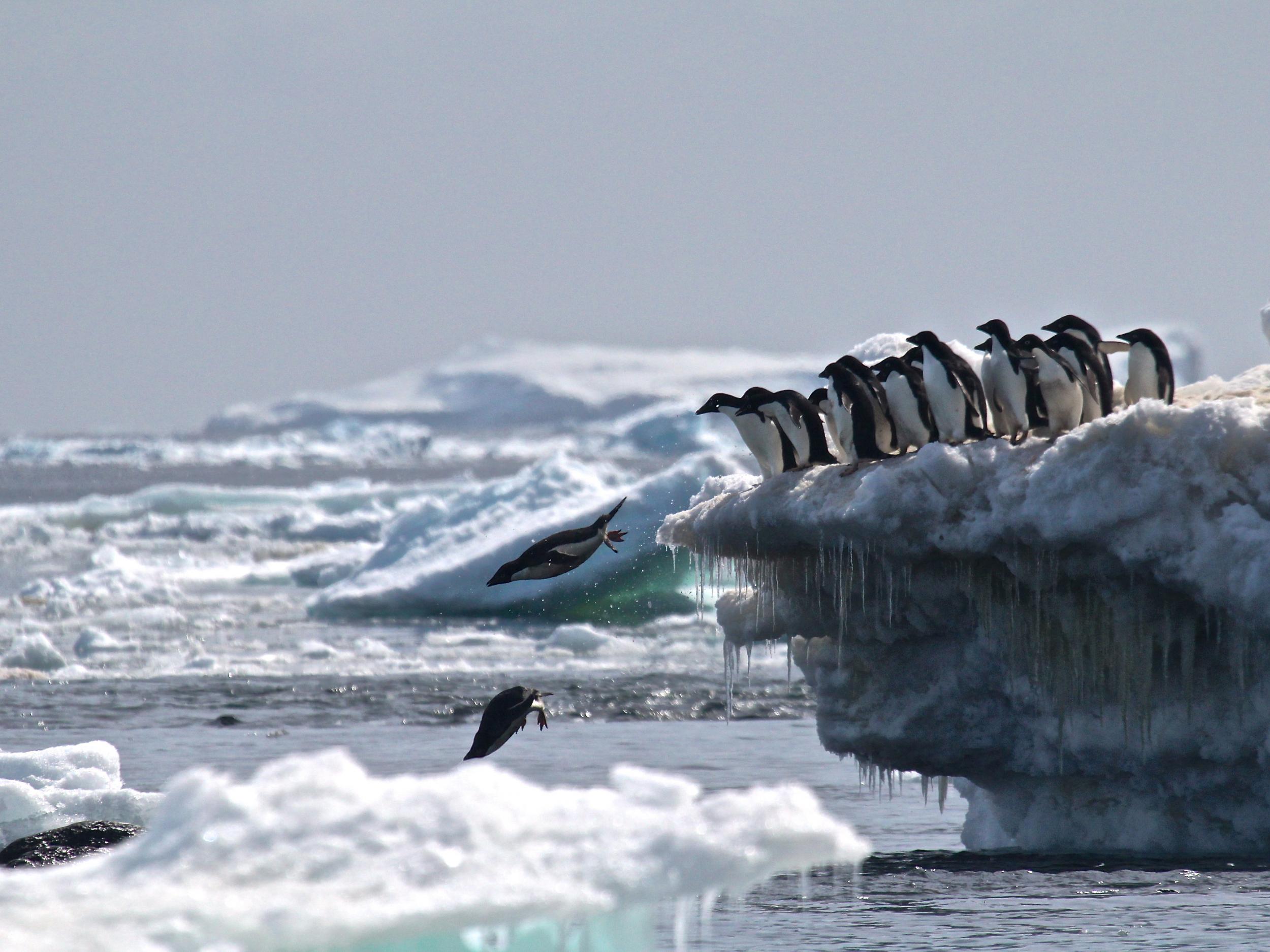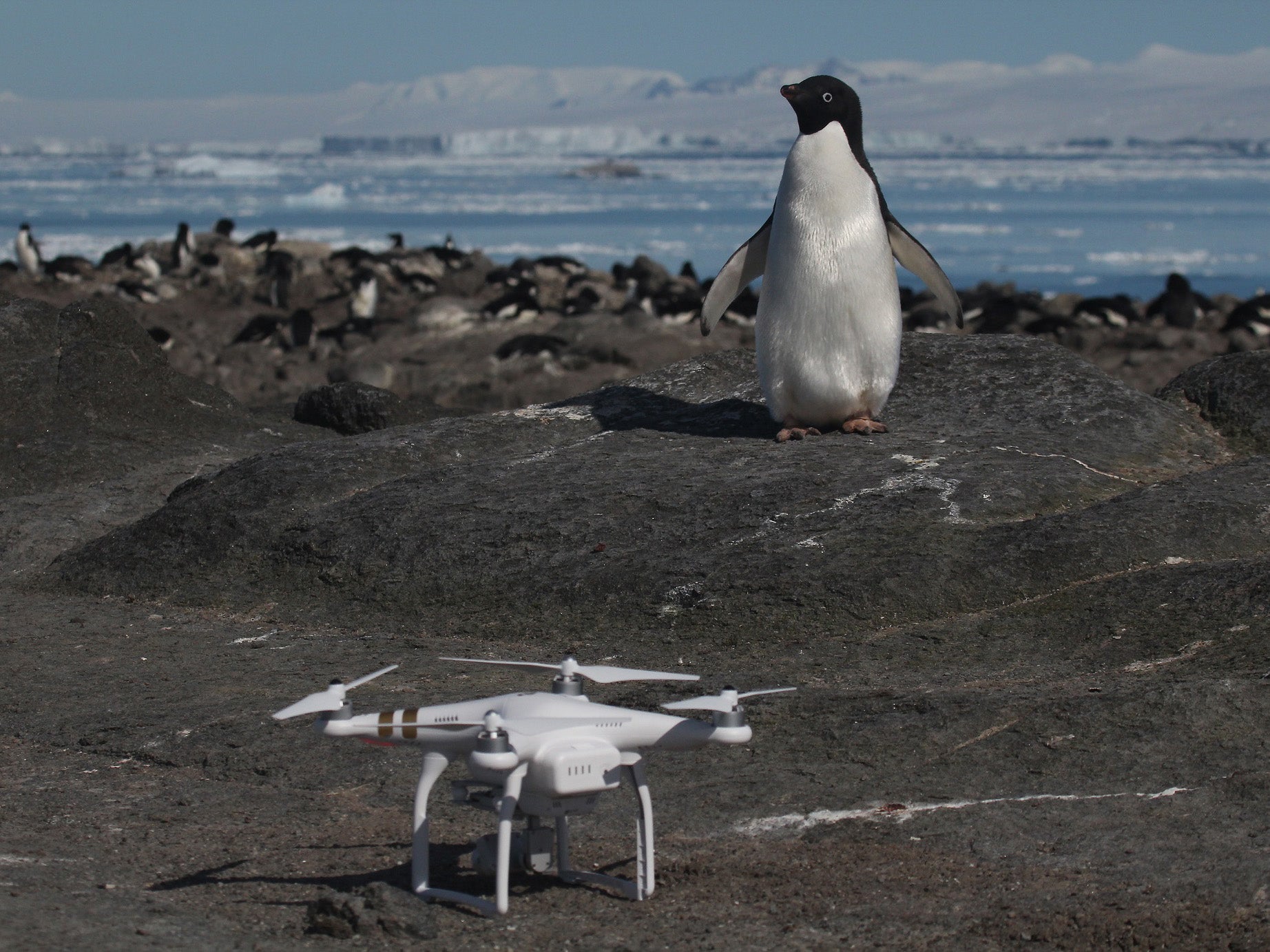Previously unknown 'supercolony' of 1.5 million penguins discovered in Antarctica's remote Danger Islands
Discovery eases fears among scientists that species was in decline due to climate change
Your support helps us to tell the story
From reproductive rights to climate change to Big Tech, The Independent is on the ground when the story is developing. Whether it's investigating the financials of Elon Musk's pro-Trump PAC or producing our latest documentary, 'The A Word', which shines a light on the American women fighting for reproductive rights, we know how important it is to parse out the facts from the messaging.
At such a critical moment in US history, we need reporters on the ground. Your donation allows us to keep sending journalists to speak to both sides of the story.
The Independent is trusted by Americans across the entire political spectrum. And unlike many other quality news outlets, we choose not to lock Americans out of our reporting and analysis with paywalls. We believe quality journalism should be available to everyone, paid for by those who can afford it.
Your support makes all the difference.A previously unknown “supercolony” of Adélie penguins has been discovered in the Antarctic, easing fears their numbers had been in decline for decades.
The thriving colony inhabits the Danger Islands, where the effects of both climate change and human activity are less pronounced than in other parts of Antarctica.
Located off the Antarctic Peninsula’s northern tip, these islands are both incredibly remote and surrounded by thick sea ice.
This allowed the penguins to remain hidden from the world, until a team of researchers mounted an expedition there to investigate signs of nesting birds.
“Until recently, the Danger Islands weren’t known to be an important penguin habitat,” said Professor Heather Lynch, an ecologist at Stony Brook University who co-led the work.

However, this changed when scientists noted guano stains on Nasa satellite imagery of the islands – a tell-tale sign of a massive penguin colony.
To investigate, Professor Lynch led a team to the islands with the intention of counting the birds first-hand.
As well as assessing the birds from the ground, the scientists used drones to take pictures of the island from above and count the hundreds of thousands of breeding pairs.
“The drone lets you fly in a grid over the island, taking pictures once per second. You can then stitch them together into a huge collage that shows the entire landmass in 2D and 3D,” said Professor Hanumant Singh, an engineer at Northeastern University who developed the drone’s imaging and navigation system.
Once they had created these massive images, the scientists used neural network software to analyse them and search for penguin nests autonomously.
In total, there were 751,527 pairs of penguins living on the islands – more than the rest of the Antarctic Peninsula combined.
Professor Michael Polito, an ecologist at the Louisiana State University who participated in the research, said he was “amazed by the sheer number of Adélie penguins” he saw.
“The water around the island boiled with penguins,” he said.
For decades, scientists thought the total number of Adélie penguins had been in steady decline, but the new colony has been protected by its remote location.

“Not only do the Danger Islands hold the largest population of Adélie penguins on the Antarctic Peninsula, they also appear to have not suffered the population declines found along the western side of Antarctic Peninsula that are associated with recent climate change,” said Professor Polito.
“It puts the east Antarctic Peninsula in stark contrast to the Adélie and chinstrap penguin declines that we are seeing on the west Antarctic Peninsula,” said Dr Tom Hart, a penguin researcher at the University of Oxford.
“It’s not clear what the driver of those declines is yet; the candidates are climate change, fishing and direct human disturbance, but it does show the size of the problem.”
This stark comparison suggests penguins fare much better when their environments are completely undisturbed, a finding that reinforces calls from environmentalists for a protected area in the Weddell Sea, where the Danger Islands are located.
The study documenting the discovery was published in the journal Scientific Reports.
“This exciting discovery shows us just how much more there still is to learn about this amazing and iconic species of the ice,” said Rod Downie, head of polar programmes at WWF.
“But it also reinforces the urgency to protect the waters off the coast of Antarctica to safeguard Adélie penguins from the dual threats of overfishing and climate change.”

Join our commenting forum
Join thought-provoking conversations, follow other Independent readers and see their replies
Comments